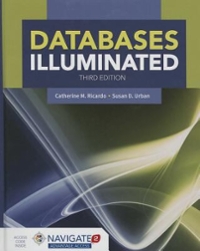Answered step by step
Verified Expert Solution
Question
1 Approved Answer
Question 3 ( a ) Network congestion management requires for TCP to evaluate the Retransmission TimeOut ( RTO ) interval using Jacobson's algorithm. The algorithm
Question
a Network congestion management requires for TCP to evaluate the Retransmission TimeOut RTO interval using Jacobson's algorithm. The algorithm dynamically calculates the round trip time and its mean deviation which are then used to update the current RTO. The current estimates of the and are: and the three subsequent measured RTTs are: and
i Apply Jacobson's algorithm and calculate the new updated RTOs. Compare the
final updated RTO with its initial value and explain these results. Assume the same smoothing factor for calculations of and respectively.
ii Discuss what will happen if TCP will set up its retransmission timer with a timeout
interval considerably smaller or considerably larger than the evaluated RTO.
b Consider TCP in a transmitting host which is running dynamic evaluation of the congestion window to prevent network congestion. Suppose at some moment of time the current calculated congestion window size is kilobytes, and the retransmission timeout RTO has occurred at this moment. The receive sliding window is kilobytes. Assume that the maximum segment size is kilobyte, and the roundtrip time is
i Explain and describe in detail which algorithms will be used by TCP for evaluation
of the congestion window beginning from the moment until the first full window will be sent. Support your explanations with a sketch of variation of with time measured in RTT units
ii Find how long it will take before the first full window will be sent.
c A TCP machine is sending the maximum size IPv packet of bytes over a
optical fibre link which has a msec oneway propagation delay. Calculate an upper bound for the link efficiency
Question continues...
CEAU
Question continued
d Routing of packets in the global Internet relies on a hierarchical approach.
i List the four classes of routers used in the global Internet and explain the purpose of
each of them.
ii Explain why the Routing Information Protocol RIP and the Open Shortest Path
First OSPF protocol could not be used over the entire Internet.
iii Explain why the Internet is divided into Tiers, Autonomous Systems, and Areas.

Step by Step Solution
There are 3 Steps involved in it
Step: 1

Get Instant Access to Expert-Tailored Solutions
See step-by-step solutions with expert insights and AI powered tools for academic success
Step: 2

Step: 3

Ace Your Homework with AI
Get the answers you need in no time with our AI-driven, step-by-step assistance
Get Started


